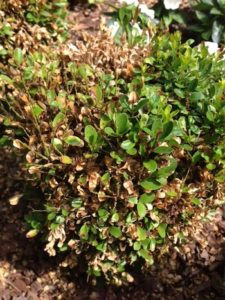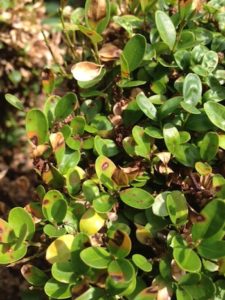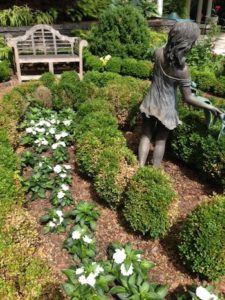 Boxwood blight is a devastating disease of boxwoods. It was first identified in the US in 2011. Up to now it has been only seen in nurseries and large public gardens.
Boxwood blight is a devastating disease of boxwoods. It was first identified in the US in 2011. Up to now it has been only seen in nurseries and large public gardens.
We identified the blight in an Atlanta landscape which does not bode well for landscapes in Atlanta.
Tan, circular leaf spots with a dark brown border develop within two days of inoculation. This is followed rapidly by the entire leaf turning brown, black lesions developing on the stems, and plant defoliation (see images). In some cases, time between leaf spot symptoms to plant death was two weeks. The disease is virtually unpreventable with fungicides and once present on the boxwoods is not effectively treatable.
Due to the sticky nature of the spores that the fungus produces, the disease can be introduced by contaminated shears or tools, workers clothing, pets, or anything that may have come in contact with infected plants. Installation of infected plants leads to infection of existing boxwoods.
This disease also produces a specialized spore called a microssclerotia in the roots which is left in the soil after the plants are removed. Consequently, the soil must also be removed. Unfortunately, it is impossible to remove all the infective spores so, once you have this disease you are done with boxwoods. At least until a viable treatment becomes available.
The bottom line is that if you have this disease your boxwoods should be removed and bagged and hauled to the dump, the soil removed and then the area not replanted with boxwoods.


